IoT Sensors for Pest Monitoring: Real-Time Data Explained
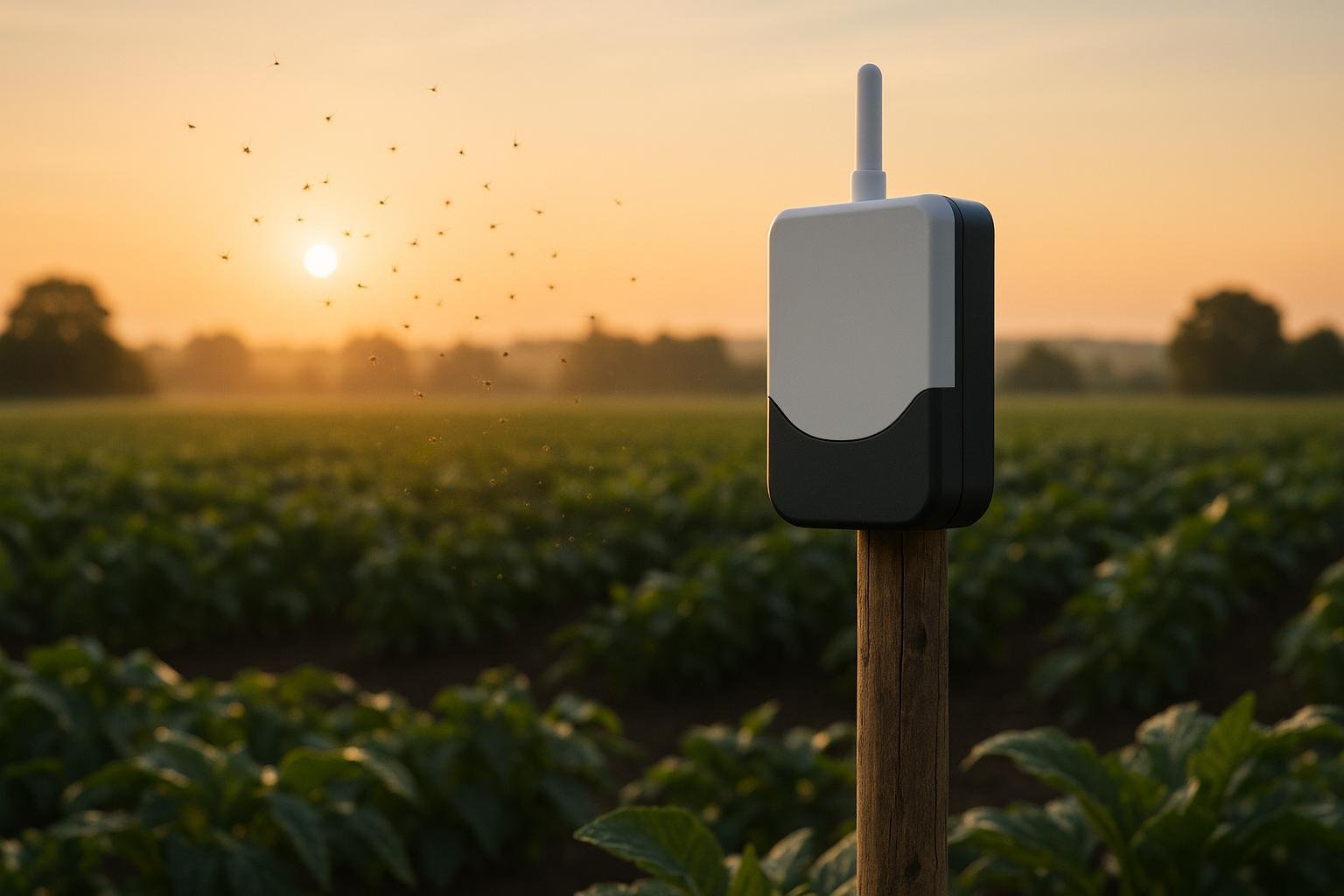
IoT sensors are transforming pest control by providing real-time data to detect and prevent infestations early, saving crops and reducing pesticide use. These devices monitor pest activity, analyze environmental factors, and send instant alerts, enabling precise and timely action. Here's what you need to know:
- Real-Time Benefits: Early detection stops infestations before they spread, reducing crop losses (20%-40% of global crops are destroyed by pests annually).
- Types of Sensors: Cameras, thermal, acoustic, gas, and environmental sensors track pests and conditions like temperature and humidity.
- AI Integration: IoT works with AI tools to predict pest outbreaks, identify species, and optimize garden planning.
- Practical Examples: Systems like Trapview and Rentokil’s PestConnect use advanced sensors and AI to manage pests efficiently.
- Challenges: High initial costs ($580+ for starter kits), connectivity issues in rural areas, and data management complexities.
Quick Takeaway: IoT pest monitoring is reshaping agriculture by combining automation, AI, and real-time insights for smarter, eco-friendly pest control.
Tithonus: Real-Time Smart Pest Monitoring Detection System for Urban Farming with Farmbot & YOLOv5

How IoT Sensors Work in Pest Monitoring
IoT sensors are transforming pest monitoring by combining advanced detection tools, data analysis, and wireless communication to create a robust defense system for gardens and other areas. Here's a closer look at how these systems work.
Types of Sensors for Pest Detection
IoT pest monitoring systems use a variety of sensors, each designed to detect specific pest-related activities. For instance:
- Low-power cameras continuously monitor and capture pest movements and damage patterns [1].
- Thermal sensors detect heat signatures from warm-blooded pests, such as rodents.
- Acoustic sensors pick up the unique sound frequencies pests make during feeding, mating, or movement. These systems can identify pest species with up to 90% accuracy based on their sound patterns [6].
- Gas sensors, particularly metal oxide semiconductor (MOS) types, analyze chemical signatures released by pests. For example, they can determine insect age with 96.67% accuracy and count populations with 64.67% accuracy when monitoring brown rice plant hoppers [5].
- Fluorescence image sensing highlights pest activity through light wavelengths invisible to the human eye [1].
- Environmental sensors track factors like temperature and humidity, which influence pest behavior.
Strategically placing these sensors at entry points - such as doorways, windows, and foundation cracks - and in high-risk areas like kitchens, basements, and storage rooms enhances their effectiveness [6].
Data Collection and Analysis Methods
IoT pest control systems rely on a network of sensors and traps to gather detailed information about pest activity and environmental conditions. These sensors measure critical parameters, including temperature, humidity, and movement patterns. Specialized algorithms then analyze this data to differentiate normal activity from potential pest threats. When activity surpasses preset thresholds, the system sends instant alerts [6].
AI-powered cameras play a significant role in species identification, achieving up to 95% accuracy when analyzing smartphone photos or automated camera images [6]. Different sensors require tailored AI models for optimal performance. For instance:
- Conductive polymer gas sensors, using VOC fingerprints, can detect kudzu bugs in soybeans with 94.4% accuracy.
- Advanced electronic nose systems have reached 100% accuracy in identifying certain fruit fly species [5].
Once processed, the analyzed data is transmitted in real time for immediate action.
Real-Time Data Transmission and Sync
Real-time communication is the backbone of IoT pest monitoring. Wireless Sensor Networks (WSNs) link sensors across gardens, enabling seamless data sharing and creating a coordinated monitoring system [7]. Data aggregators compile information from multiple sensors and forward it to central processing units, reducing network congestion and ensuring smooth data flow, even in large areas [7].
The speed of data transmission is critical. For example, Particle Swarm Optimization has reduced transmission times to just 4.868 seconds, compared to 262 seconds with Genetic Algorithms [9]. Various wireless protocols support these systems, including LoRaWAN, 4G, Zigbee, Sigfox, WiFi, and satellite connections, making them adaptable to different environments [10]. Platforms like Amazon Kinesis and Apache Kafka manage data streaming using protocols such as MQTT, CoAP, or HTTPS. Data is then stored in cloud systems, on-premises servers, or hybrid setups, allowing for both immediate analysis and long-term trend tracking [8].
Security is a top priority during data transmission. Strong encryption, authentication, and access control safeguard sensitive information, while regular sensor calibration and data validation ensure reliability [7]. With IoT devices expected to generate 80 zettabytes of data by 2025, efficient transmission systems are more crucial than ever [8].
Benefits and Challenges of IoT Pest Monitoring
IoT pest monitoring systems bring a mix of advantages and challenges to garden and farm management. Knowing both sides can help you decide whether this technology is right for your needs.
Advantages of IoT Pest Monitoring
One of the standout benefits is early detection and prevention. By identifying pests early, IoT systems can significantly cut down on crop damage and reduce treatment expenses [3].
Another major perk is the reduction in pesticide use. With real-time data, you can target specific areas for treatment instead of spraying entire fields. This approach not only lowers chemical use but also minimizes contamination and reduces environmental impact [1].
The automation features of IoT systems are also game-changing. These tools eliminate the need for manual inspections and data collection. With remote monitoring, you can track pest activity without constant site visits, saving time and enabling faster responses based on sensor alerts [1].
Predictive analytics is another strength. By analyzing weather patterns and pest breeding cycles, these systems can forecast potential infestations and suggest customized prevention strategies [1].
And let’s not forget the cost savings. Less pesticide use, fewer inspections, and reduced crop damage all add up to lower expenses, while also promoting more sustainable farming practices [2][3].
| Benefit | Result | Impact |
|---|---|---|
| Early Detection | Identifies infestations early | Prevents crop losses |
| Targeted Treatment | Reduces unnecessary pesticide use | Cuts costs and protects the environment |
| Automation | Eliminates manual inspections | Saves time and reduces labor costs |
| Predictive Analytics | Anticipates pest problems in advance | Enables proactive prevention |
| Remote Monitoring | Provides continuous oversight remotely | Ensures ongoing protection |
While the benefits are clear, there are also hurdles to consider.
Implementation Challenges
The high initial investment is often the first obstacle for small-scale farmers and gardeners. For example, a basic starter kit with two sensors and a hub costs $580, with additional sensors priced at $119 each, plus an annual data reporting fee of $119 [11]. This upfront cost, combined with uncertain returns, can make adoption difficult [3].
Another issue is poor internet connectivity in rural areas, which can disrupt real-time data transmission [12].
Then there’s the technical complexity. Many users need training to operate these systems effectively, and cybersecurity concerns mean investing in strong encryption, regular updates, and secure authentication protocols [3].
Data management is another challenge. IoT devices generate massive amounts of information, requiring advanced analytics tools and expertise - resources that might not be readily available. On top of that, operational issues like power outages, network problems, or faulty hardware can affect reliability.
| Challenge | Result | Potential Solution |
|---|---|---|
| Initial Costs | $580+ upfront investment | Use subsidies or phased rollouts |
| Connectivity Issues | Unreliable data transmission | Consider satellite tech or edge computing |
| Technical Complexity | User adoption barriers | Offer training and user-friendly interfaces |
| Cybersecurity Risks | Vulnerability to breaches | Implement strong encryption and updates |
| Data Management | Overwhelming information to process | Use advanced analytics tools and expert help |
Despite these challenges, the global agriculture IoT market is expected to hit $28.65 billion by 2024, growing at 10.5% annually through 2030 [13]. As Foster Brusca notes:
The integration of IoT technology in pest control has the potential to revolutionize the way pests are monitored and managed [14].
For many, the best approach is to start small. Focus on basic features first, then expand as your budget and needs grow. Government grants, subsidies, and open-source tools can also make the transition smoother and more affordable.
🚀 Ready to Reinvent Your Garden?
Join thousands of homeowners who have transformed their gardens using our AI design tool. Upload one photo to explore endless possibilities.
Get your AI garden designs →Practical Applications and Case Studies
IoT pest monitoring systems are no longer just theoretical; they’re showing impressive results in real agricultural settings. These examples highlight how farmers and growers are leveraging sensor technologies to protect crops, cut costs, and reduce their environmental footprint.
IoT Pest Management Examples
One standout example is EFOS Ltd.'s Trapview System, which has been making waves in orchards and vineyards. This IoT-enabled system combines sensors, cameras, and AI algorithms to monitor pest populations continuously. It captures and analyzes images of trapped insects, delivering real-time data that helps growers identify pest species and track activity [15][5].
Another innovation comes from John Deere's See & Spray™ technology, developed in partnership with Blue River Technologies. This system uses computer vision to spot weeds among crops and targets them with precision. The result? Farmers save up to 77% on herbicide costs while minimizing chemical drift [4].
Meanwhile, researchers at Tamil Nadu Agricultural University (TNAU) have created a mobile app that uses IoT data to tackle field-specific pest problems. The app, powered by deep convolutional neural networks, identifies fall armyworm infestations in maize with remarkable accuracy - 98.47% during training and 93.47% during validation [5].
Commercial systems are also proving their worth, offering real-time alerts and predictive capabilities. For instance, smart traps not only reduce labor needs by 40% but also cut pesticide use by half. Image recognition technology further enhances efficiency, identifying pest species with over 92% accuracy [16].
"Agricultural IoT technologies enable greater efficiency, precision and sustainability in the field. Through data collection and analysis, farmers can improve resource management, detect pest activity, forecast future infestations and accurately automate spraying." - Zac Amos, ReHack [3]
These examples reflect a growing trend: combining real-time data with intelligent platforms to refine pest control strategies.
IoT Integration with AI-Powered Tools
Taking things a step further, integrating IoT sensors with AI-powered platforms is revolutionizing pest management. By feeding sensor data into intelligent systems, farmers can use predictive analytics to anticipate pest issues weeks ahead of time [16].
A prime example of this evolution is AIGardenPlanner, which goes beyond traditional detection and response. This platform uses sensor data to create customized pest management strategies. For instance, if recurring pest activity is detected, its AI Plant Advisor might suggest pest-resistant plant varieties or recommend companion planting to deter common pests naturally.
The platform also analyzes location-specific climate data alongside sensor readings, offering proactive solutions. If IoT sensors detect frequent aphid activity during specific temperature ranges, AIGardenPlanner could propose planting aphid-resistant crops or designing gardens that attract beneficial insects.
This approach is especially useful during seasonal transitions. By analyzing pest lifecycle patterns through IoT data, the platform can guide decisions like crop rotation or adjusting planting schedules to mitigate pest pressures.
The benefits of this integration are backed by research. A study on AI-driven pest management reported 99.65% detection accuracy, 99.53% sensitivity, and 98.87% overall efficiency in pest prevention and control [17]. As of 2024, nearly 38% of pest control providers worldwide have adopted IoT-enabled devices, signaling a shift toward proactive pest management [16].
For home gardeners and landscaping professionals, this combination of IoT and AI offers more than just pest detection. It provides tools to manage entire garden ecosystems, balancing pest resistance with aesthetic appeal and plant health. Continuous environmental monitoring by IoT sensors, paired with AI insights, makes it easier to design gardens that thrive naturally while keeping pests at bay.
sbb-itb-4d6a8dd
The Future of IoT in Garden Pest Monitoring
The pest control industry is undergoing a major transformation, reshaping how gardens are managed. With projections estimating the market will hit $42.5 billion by 2032, IoT sensors and AI-powered platforms are no longer experimental - they're becoming essential tools in pest management [4]. This shift is paving the way for advanced technologies that are redefining how we approach pest control.
AI is playing a game-changing role. These systems can predict pest outbreaks with an impressive 85% accuracy before any visible damage occurs. Meanwhile, predictive modeling software is even more precise, forecasting pest activity with 92% accuracy [20]. Adoption rates reflect this growing reliance on technology: smart traps and IoT devices are being used at a rate of 48%, AI-powered monitoring at 55%, and data-driven resource management at 62% [19].
Drone technology is also making waves. High-precision drones can survey up to 400 acres in a single day, identifying pest colonies with 90% accuracy. Even better, these drones reduce chemical usage by up to 60% through highly targeted applications [18]. For home gardeners, scaled-down versions of this technology may soon make aerial pest monitoring both practical and affordable.
The possibilities for integration are expanding rapidly. Genetic tracking through DNA analysis now achieves near-perfect accuracy - 99.8% - in identifying pests. Blockchain technology is being used to maintain transparent, tamper-proof records of pest control treatments [18]. Mobile apps are also stepping up, improving the accuracy of pest control documentation by 85% compared to traditional paper-based methods [18].
One standout innovation in this space is AIGardenPlanner. This platform combines IoT sensor data with AI to design pest-resistant gardens from the ground up. When sensors detect recurring pest patterns, the AI Plant Advisor suggests strategic plant placements that naturally deter specific pests without compromising the garden's aesthetics. By analyzing local climate data alongside real-time sensor readings, AIGardenPlanner is setting a new standard for predictive pest management. As sensor technology continues to improve, the platform is expected to become even more precise in addressing pest challenges before they arise.
These advancements are unlocking exciting new opportunities. Real-time alerts now cut response times by 70% compared to traditional inspections, and machine learning algorithms can identify pest species with 98% accuracy from just a single image [18].
As these technologies become more widely available, we’re moving toward systems that integrate biological controls, precision targeting, and predictive analytics. This convergence is creating gardens that are naturally resistant to pests. The line between professional and home garden management is fading, making AI-powered insights and IoT monitoring accessible to anyone with a smartphone and a patch of soil. The future of pest management is no longer limited to experts - it’s becoming a reality for gardeners everywhere.
FAQs
How do IoT sensors help reduce the need for pesticides in gardening and agriculture?
IoT sensors are transforming how we manage pesticide use by delivering real-time insights into pest activity and environmental factors. These devices keep track of conditions like humidity, temperature, and pest populations, enabling early detection of potential outbreaks.
Armed with this information, farmers and gardeners can take a more precise approach - applying pest control methods only when and where they're needed. This targeted strategy reduces chemical usage, safeguards plant health, and contributes to a cleaner, healthier environment.
What are the biggest challenges of using IoT sensors for pest monitoring, and how can they be addressed?
Challenges in Implementing IoT Sensors for Pest Monitoring
Using IoT sensors for pest monitoring can be incredibly helpful, but it’s not without its hurdles. For starters, high upfront costs for the sensors and the necessary infrastructure can make adoption difficult, especially for small-scale users. On top of that, limited connectivity in rural or remote areas can disrupt real-time data transmission, which is often critical for effective pest management. Other issues crop up too, like the security risks associated with data, handling massive amounts of information, and ensuring the accuracy and reliability of the sensor readings.
That said, technology is making strides to overcome these obstacles. For example, advancements are driving down costs while improving sensor performance. Expanding connectivity options - think satellite networks or 5G - can make it easier to use these systems in areas with poor internet access. On the security front, stronger protocols are being developed to protect sensitive data. Plus, offering easy-to-understand training can help users feel more confident about adopting and managing these systems. By addressing these challenges, IoT pest monitoring can become a practical and dependable solution for farmers and gardeners everywhere.
How do AI and IoT technologies help monitor and prevent pests in agriculture?
🎨 Visualize Your Dream Garden Today!
Transform any outdoor space into a professional landscape design in minutes. Just upload a photo, choose your style, and let our AI do the rest.
Start your garden transformation now →How AI and IoT Transform Pest Monitoring in Agriculture
AI and IoT are teaming up to change the game for pest monitoring in agriculture, offering real-time data to quickly identify and address potential threats. Here's how it works: IoT sensors collect crucial information, such as environmental conditions, pest activity, and crop health. This data is then sent to AI systems for in-depth analysis.
AI algorithms take it from there, processing the data to spot pests, predict potential infestations, and suggest precise actions. This tech-driven approach not only cuts down on pesticide use but also reduces crop damage and boosts farming efficiency. By blending cutting-edge technology with actionable insights, farmers are empowered to make smarter, more eco-friendly choices for managing pests.
Related posts
Related Articles
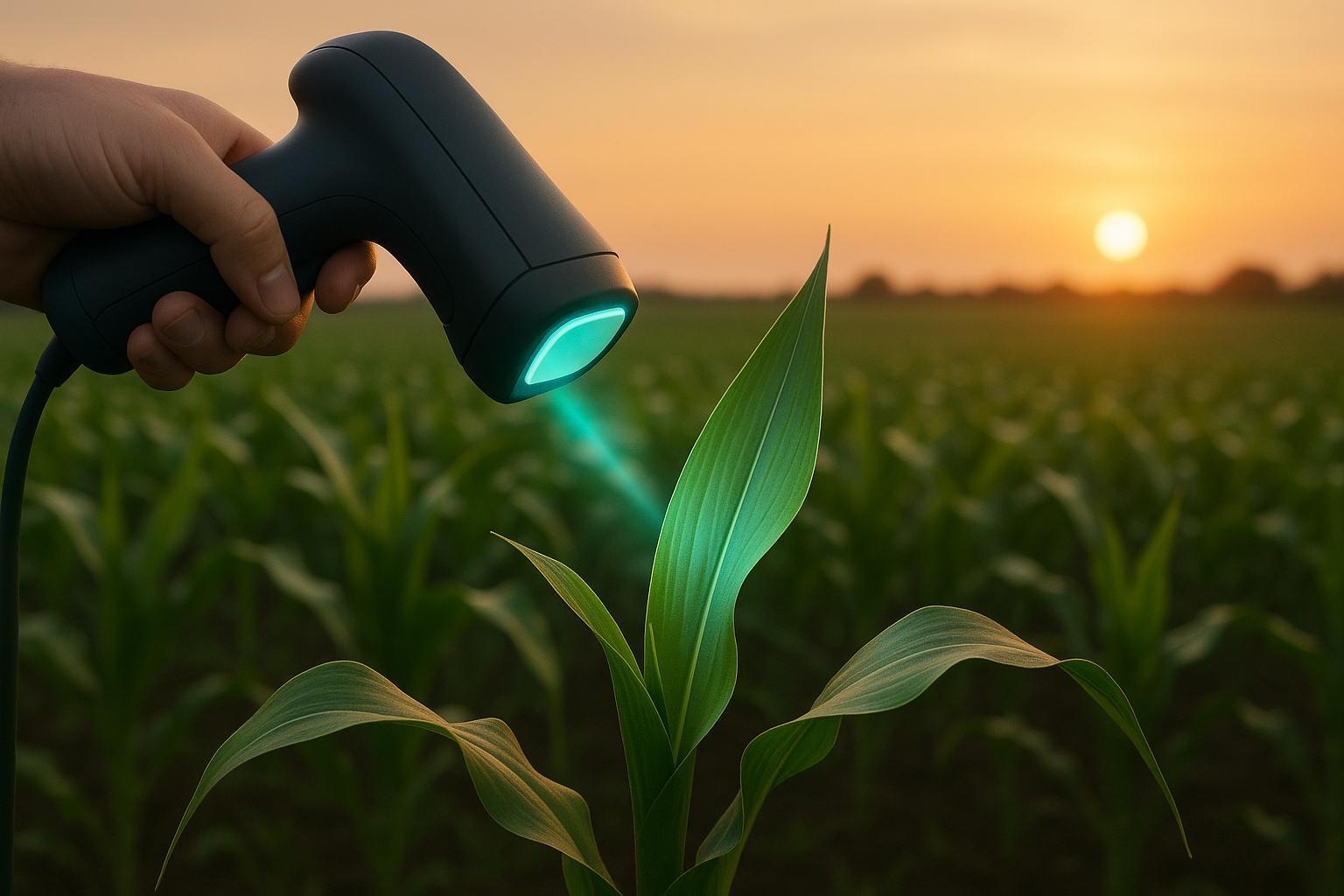
Imaging Techniques for Non-Destructive Disease Detection
Explore advanced imaging techniques revolutionizing non-destructive plant disease detection, enhancing early diagnosis and crop management.
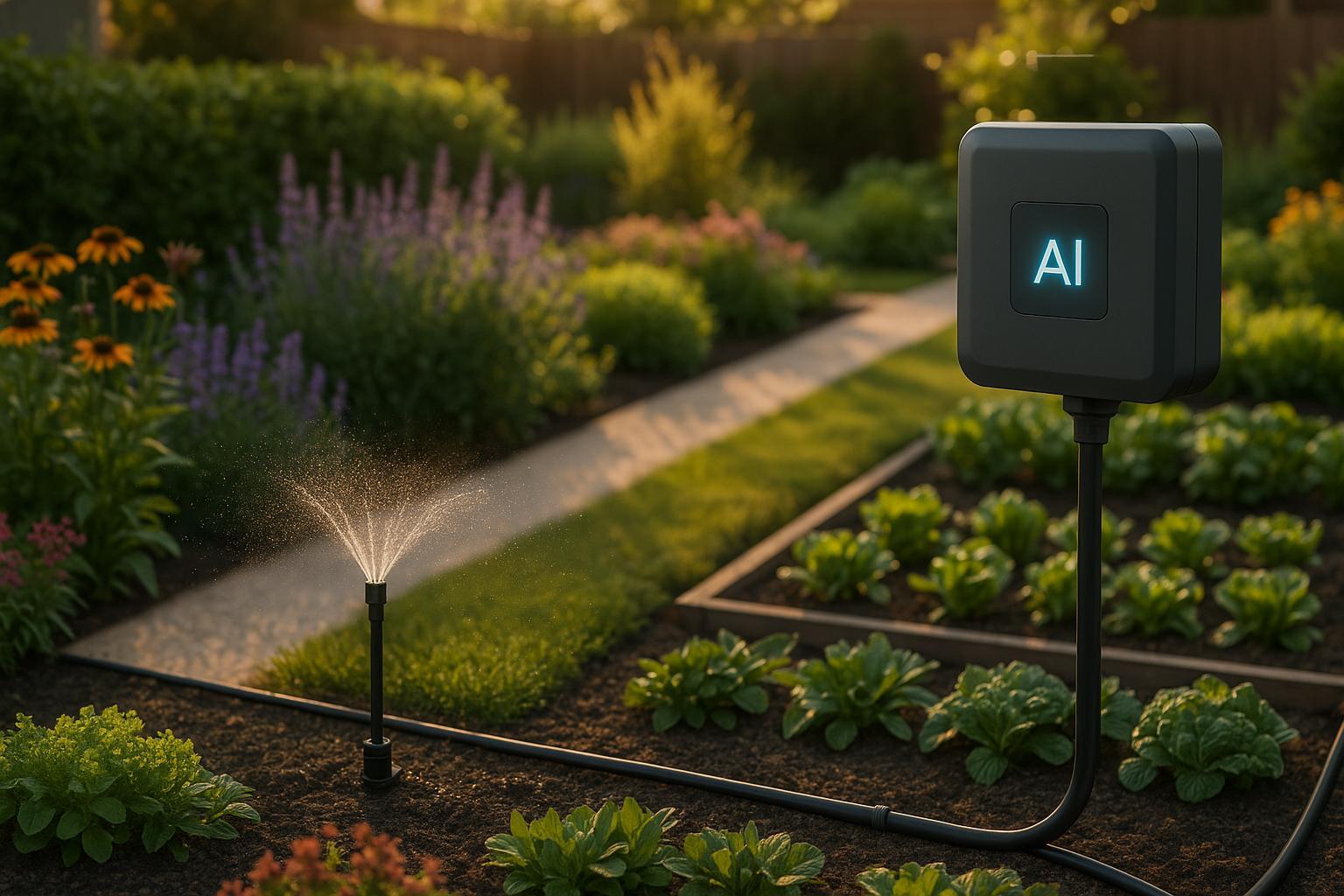
How AI Improves Garden Water Allocation
Explore how AI-driven irrigation systems optimize water usage, enhance plant health, and reduce costs in garden management.
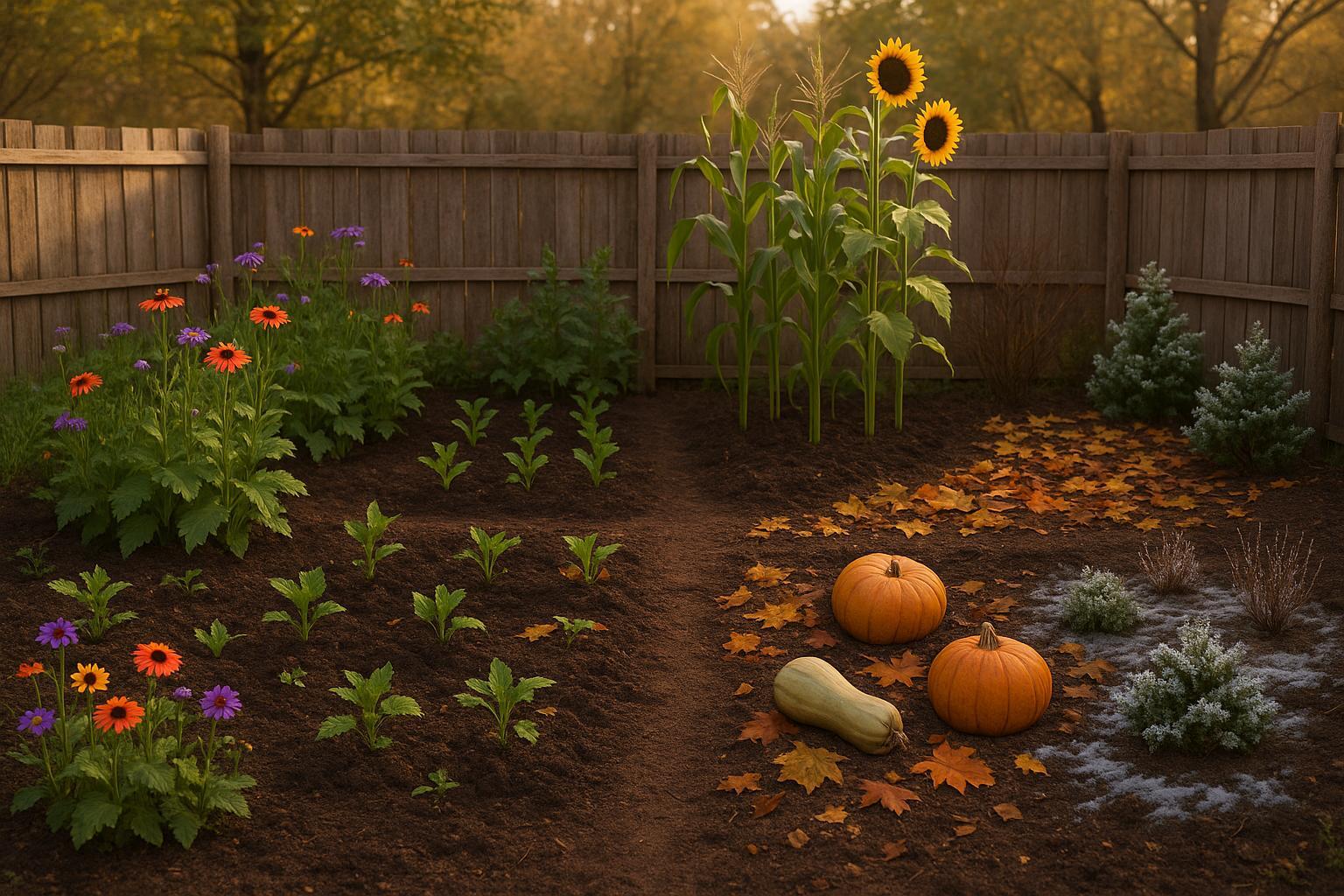
10 Indigenous Gardening Practices by Season
Explore Indigenous gardening practices that enhance plant health, conserve resources, and align with seasonal cycles for sustainable gardening.
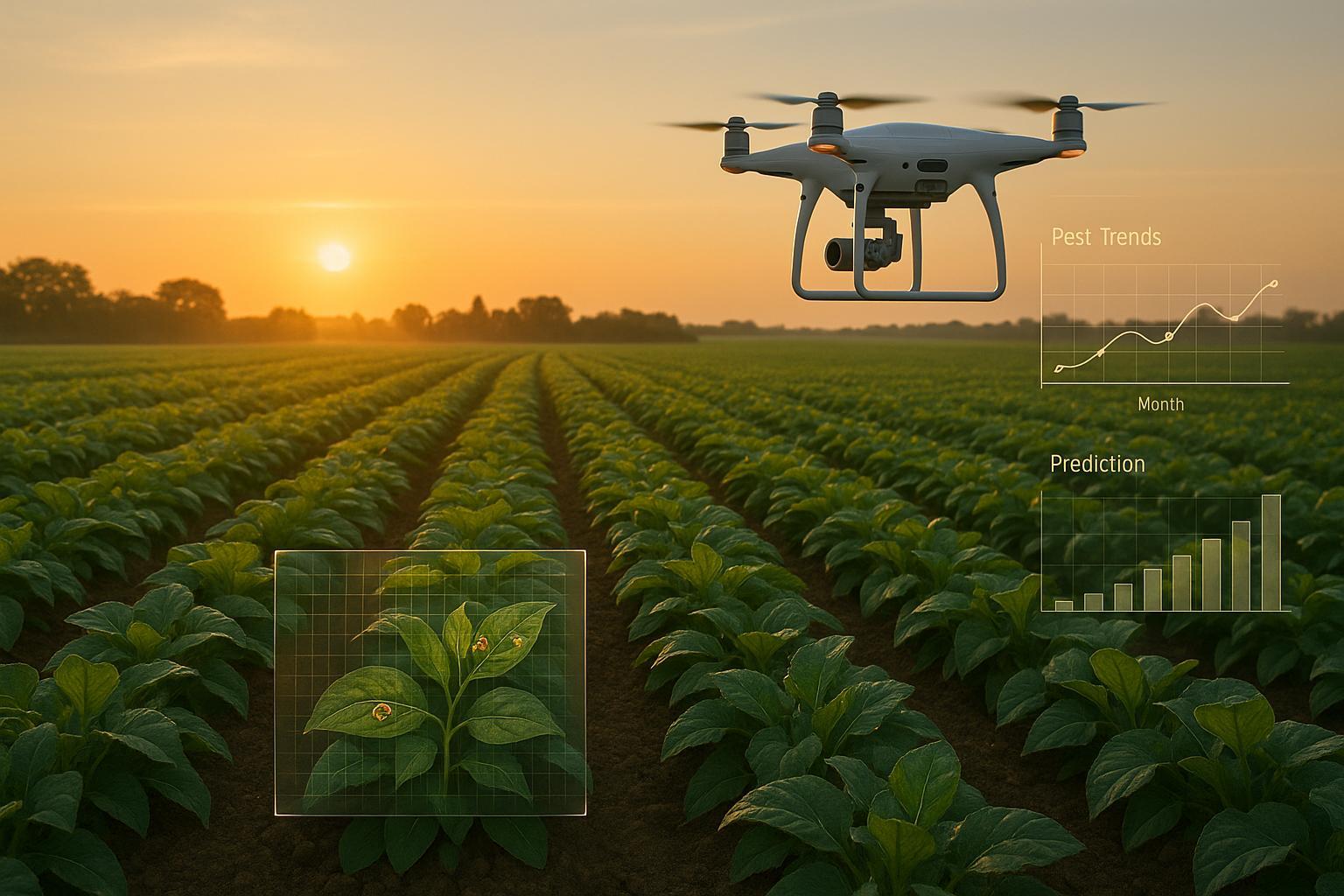
How AI Maps Pest Trends for Better Control
Explore how AI is revolutionizing pest control with accurate predictions, eco-friendly practices, and smarter pest management strategies.
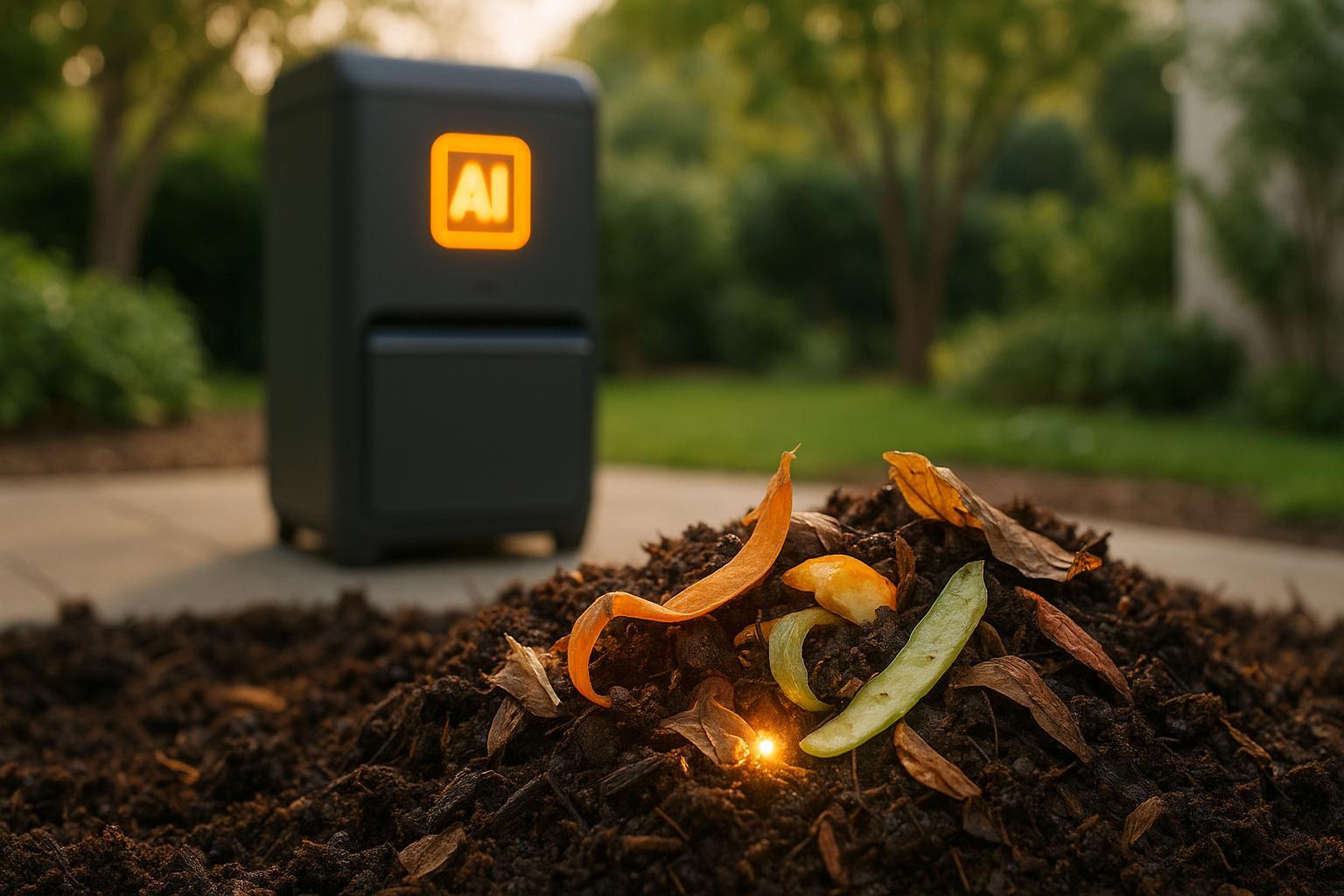
AI Composting: How It Works
Explore how AI composting enhances efficiency, reduces emissions, and transforms organic waste into high-quality compost through advanced technology.

Is Galvanized Steel Safe for Your Vegetable Garden?
Learn about the safety of using galvanized steel in your vegetable garden. This article provides an objective analysis of the risks and benefits of using galvanized steel and offers alternative materials for those concerned about its safety.